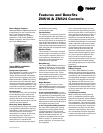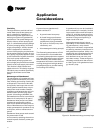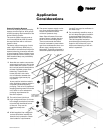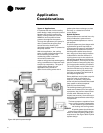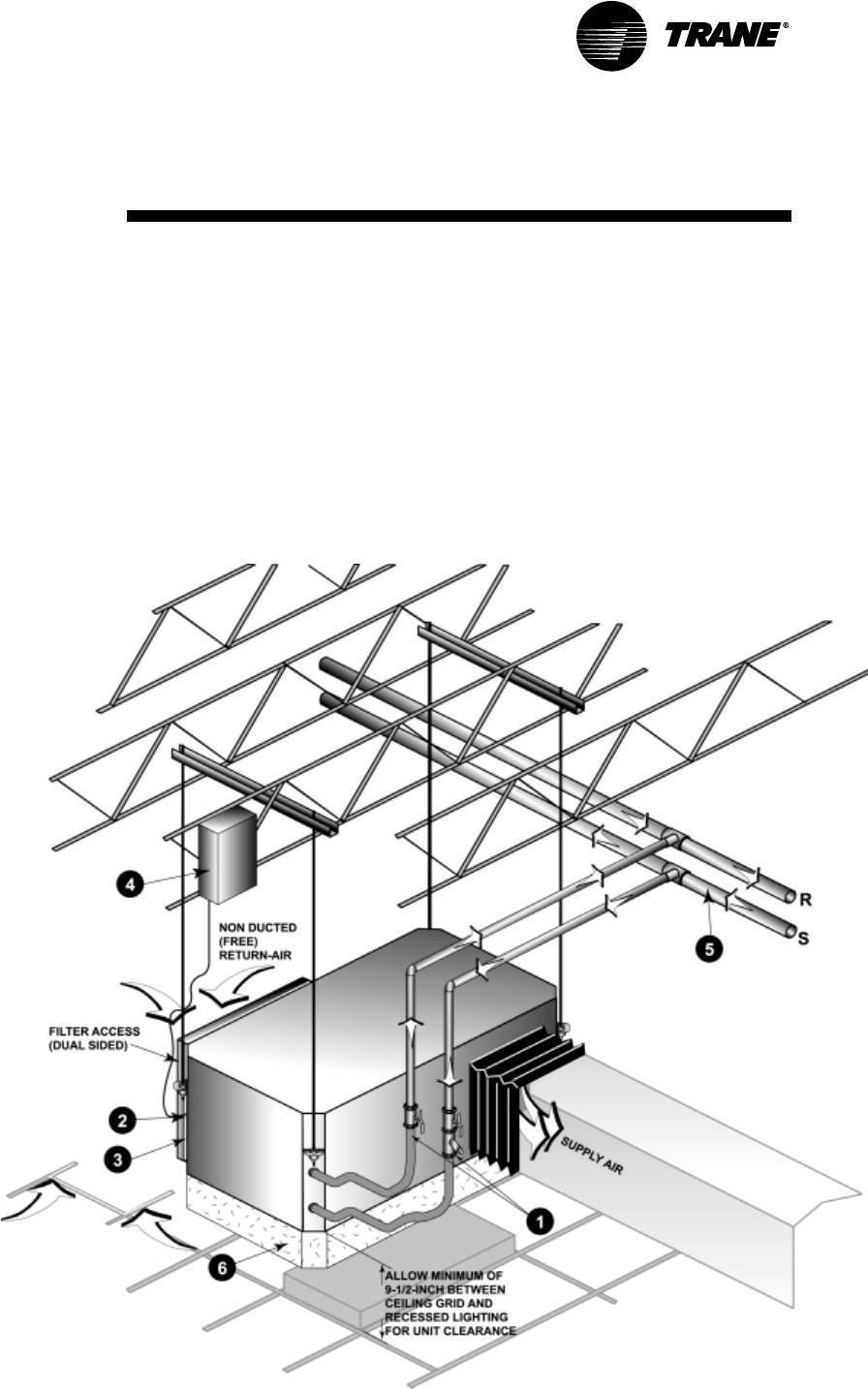
WSHP-PRC001-EN 23
Central Pumping System
Units that employ a central pumping
system contain single or dual pumps
to fulfill pumping requirements for the
entire building system.
The central system’s supply and re-
turn lines should be sized to handle
the required flow with a minimum
pressure drop.
The water-source heat pump (in this
case a high efficiency GEH) may in-
clude add-on accessories to help aid in
system balancing, acoustics and safe-
ty requirements. Some of these items
may be ordered from the factory, then
field installed. Many are provided by
the contractor.
Hose kits are used to connect the
water supply and return line to the
water inlets and outlets. Trane of-
fers various hose kit combinations
to better facilitate system flow
balancing. These flexible
hoses also aid in the reduc-
tion of vibration between the
unit and the rigid central pip-
ing system.
A two position isolation valve is
often applied to systems which in-
corporate variable frequency
pumping. This valve is capable of
stopping/starting water flow to the
unit, which in-turn reduces the
pumping requirements for
the entire system.
The unit’s (item 2) 3/4-inch
high voltage and (item 3) 1/2-inch
low voltage connections are locat-
ed on the left chamfered corner
of the unit. They are de-
signed to accept con-
duit.
A field supplied line voltage dis-
connect should be installed for
branch circuit protection. Check
local codes for requirements.
The central system supply and re-
turn lines should be sized to han-
dle the required flow with a
minimum pressure drop.
Note: Pipe will sweat if low tem-
perature water is below the dew
point of the surrounding space.
Trane recommends that these
lines be insulated to prevent dam-
age from condensation when con-
denser loop is designed to be
below 60 F. Equipment installed in
attic/crawl space temperatures be-
low 40°F may require antifreeze in
the water loop.
For acoustically sensitive areas, a
six-inch deep fiberglass insulation
is recommended to be field in-
stalled below the horizontal unit.
This field supplied insulation
should be approximately twice the
footprint size of the unit. It pro-
vides sound damping of the unit
while in operation.
Application
Considerations
1
2
3
4
6
5







